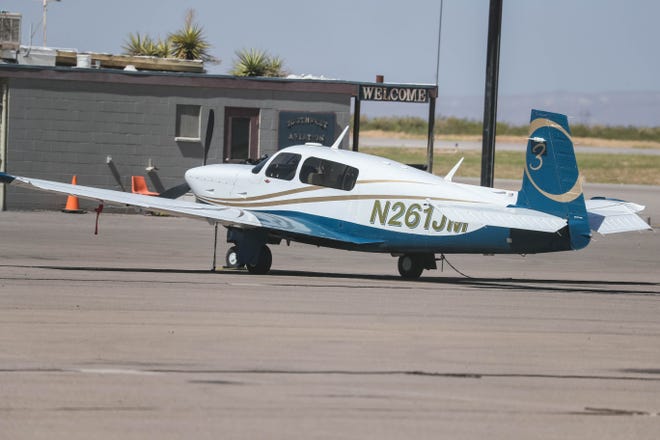Las Cruces airport planners eyeing intrastate travel
LAS CRUCES – While the city is looking to resume commercial travel to places like Dallas or Phoenix from Las Cruces International Airport, passenger flights to Albuquerque or Santa Fe could be in sight much earlier.
That’s because Las Cruces City Council heard from advisors during a working session on July 26th about the possibility of domestic air travel from LRU (the airport’s call sign) in state dollars.
Since 2005, when Westward Airways ceased operations, no scheduled flights have taken off from Las Cruces International Airport in the west of the city. Between the late 1940s and 2005, 11 airlines offered commercial passenger flights there.
Now the airport is used for general and business aviation, as well as for use by the U.S. military, private charterers, local Civil Air Patrol squadrons, and New Mexico State University for flight tests of unmanned aerial systems.
At a working meeting in September, advisors told the council that the airport could support two to four interstate flights a day using 50-76-seat aircraft with connections to Dallas or Phoenix, or both.
But domestic travel could happen sooner, the city’s airport administrator says if it were bolstered by millions of dollars in state grant money under a new law passed in Santa Fe earlier this year – the Rural Air Service Enhancement Act.
“The idea of Instrastate (travel) only came about because the legislature approved this law,” said the city’s airport administrator, Andy Hume, on Monday. “This could be a good idea to get the service started a little faster while we continue working the interstate route.”
Hume said the grant would be up to $ 1.75 million per year, or up to $ 3.5 million in total, for two years. It would require a 10 percent match from the city, a maximum of $ 175,000 a year. It is estimated that an additional $ 50,000 will be needed for the duration of the marketing grant, Hume said.
When commercial service begins, Guy Rouelle, airport advisor at DuBois & King stressed the importance of not undermining the “robust” existing general aviation community that uses the airport.
The consultant offered a short, medium and long term vision for a successful resumption of flight service from within the LRU. In the short term, over the next one to three years, Rouelle said a makeshift terminal building should be used to accommodate passenger traffic, either domestic or interstate. In addition, the planners would have to ensure that the airport’s infrastructure, its runways, aprons and taxiways, support larger aircraft.
Rouelle presented an immediate goal to city councils: If the airport can achieve at least 10,000 enplanements in a single year, the $ 150,000 in annual funding it currently receives from the Federal Aviation Administration could increase seven times to $ 1 million a year increase.
“That’s a huge yardstick for the airfield,” said Rouelle. And this money could be invested in the airport in order, for example, to set up a permanent customs facility in the medium term.
Others read:
In the medium term, around four to ten years, what Rouelle called a “testing ground” for the FAA to monitor the emergence of a sustainable flight service at the airport that could lead to the airport receiving funding.
In the long term, Rouelle said, the airport should invest in building its own commercial terminal so that passenger service does not interfere with the general aviation currently operating at the airport outside of the existing terminal.
If a grant is awarded, it would be submitted to the Council for final approval.
Michael McDevitt is the city and county government reporter for Sun News. He can be reached at 575-202-3205, mmcdevitt@lcsun-news.com or @MikeMcDTweets on Twitter.
[ad_1]



